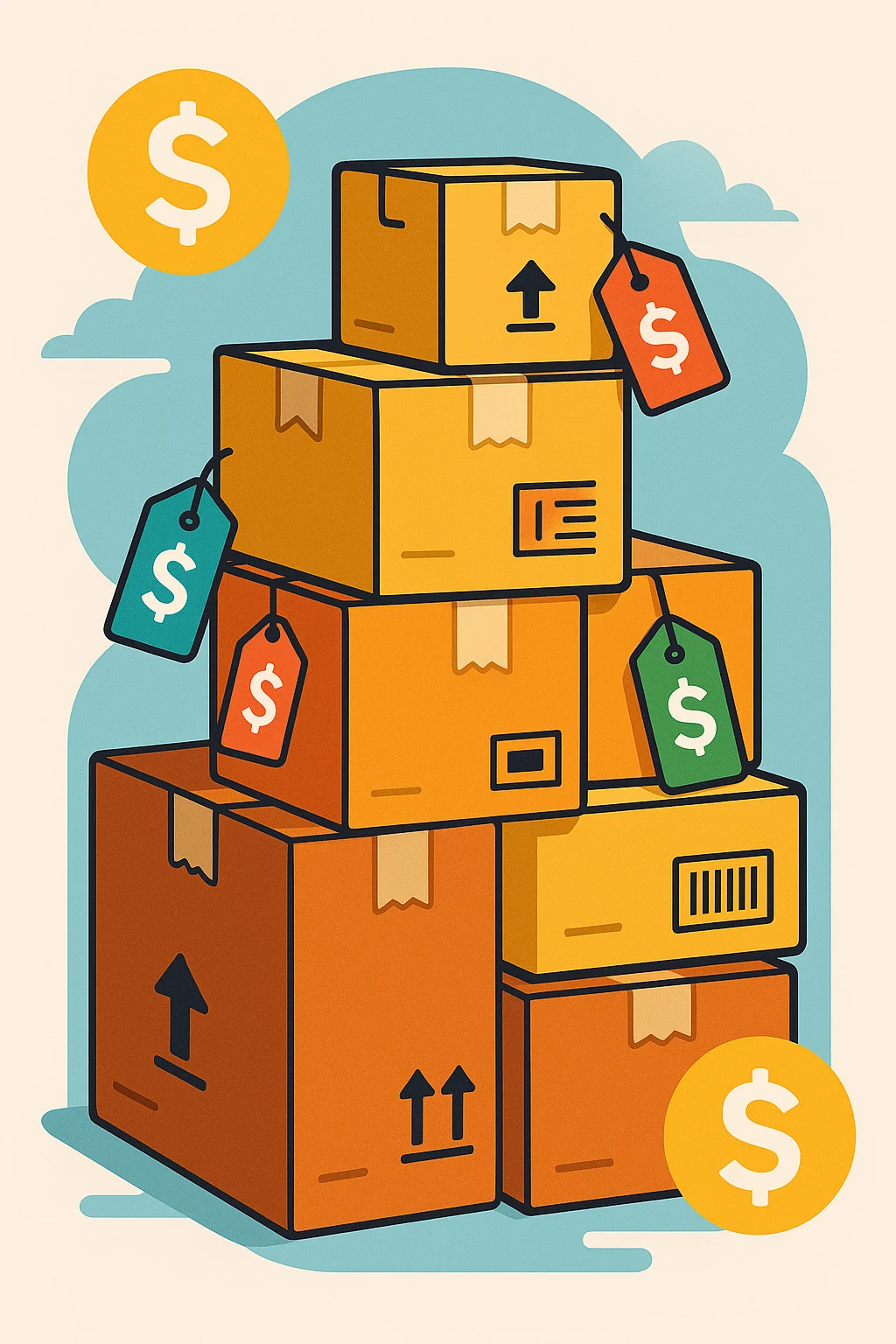Key Takeaway: Shipping box prices vary widely-ranging from as little as $0.20 per unit for basic mailers to over $10 per unit for large, custom-printed, heavy-duty boxes-driven principally by material type, size, construction, customization, order volume, and supplier. Understanding these cost drivers and market options enables businesses and individuals to optimize packaging expenses without sacrificing protection or branding.
1. Introduction
Shipping boxes are the backbone of any e-commerce, fulfillment, or mailing operation. They protect goods during transit, convey branding, and can even influence customer perception. But box costs, while seemingly mundane, add up quickly: a penny saved per box on a run of 100,000 units yields $1,000 in savings. Conversely, underestimating costs can erode profit margins. This report explores in detail:
- Material types and their price implications
- Box sizes and typical cost ranges
- Construction grades (single-wall, double-wall, etc.)
- Customization options
- Volume and supply-chain factors
- Comparative pricing from leading suppliers
- Strategies to reduce box costs
2. Material Types and Grades
2.1 Corrugated Fiberboard
Corrugated fiberboard is the industry standard for shipping boxes. It consists of one or more fluted (“corrugated”) medium layers sandwiched between linerboards.
- Single-Wall Corrugated
- Construction: One layer of fluting between two liners
- Typical Uses: Lightweight to medium-weight goods
- Cost Range: $0.50–$2.00 per box for standard small to medium sizes
- Double-Wall Corrugated
- Construction: Two layers of fluting and three liners
- Typical Uses: Heavier or fragile goods requiring extra protection
- Cost Range: $1.50–$5.00 per box for medium to large sizes
- Triple-Wall Corrugated
- Construction: Three fluted layers
- Typical Uses: Industrial or bulk shipments
- Cost Range: $5.00–$12.00+ per box
2.2 Solid Fiberboard
A single solid sheet of fiberboard, often used for lightweight items and applications where rigidity is paramount.
- Cost Range: $0.30–$1.00 per unit for small to medium sizes
- Note: Less cushioning; often combined with void-fill materials
2.3 Paperboard and Folding Cartons
Made of a single heavy layer of paperboard; common for retail packaging rather than bulk shipping.
- Cost Range: $0.25–$1.00 per box, depending on size and print
3. Size Categories and Price Benchmarks
Pricing is strongly correlated with internal dimensions and material grade. Below are representative cost brackets for common e-commerce box sizes, purchased in moderate volumes (1,000–5,000 units):
These figures reflect typical wholesale pricing and can vary by supplier, geography, and raw-material markets.
| Size (inches) | Single-Wall Cost | Double-Wall Cost |
|---|---|---|
| 6 × 4 × 2 | $0.20–$0.40 | – |
| 8 × 6 × 4 | $0.30–$0.60 | – |
| 12 × 9 × 4 | $0.50–$1.00 | $1.50–$2.50 |
| 14 × 10 × 5 | $0.70–$1.20 | $1.80–$3.00 |
| 18 × 18 × 16 | $2.50–$4.00 | $4.50–$7.00 |
| 24 × 18 × 18 | $3.00–$5.00 | $5.00–$8.00 |
4. Customization and Branding
4.1 Printing and Graphics
- Black-and-White Print: $0.03–$0.10 extra per box
- Full-Color Printing (4/0): $0.10–$0.30 extra per box
- Full-Color Both Sides (4/4): $0.20–$0.50 extra per box
Print costs decline as volumes increase due to setup and plate amortization. Typical thresholds:
- 500–1,000 units: setup amortized heavily-higher per-unit print cost
- 5,000+ units: per-unit print cost approaches material-only incremental cost
4.2 Structural Customization
- Die-Cut Shapes, Inserts: $0.05–$0.25 per unit for custom die
- Windowing or Specialty Coatings: $0.10–$0.30 per unit
5. Supplier Types and Pricing Models
5.1 Major Distributors (Uline, Grainger, Staples)
- Catalog Pricing: Transparent, tiered
- Typical MOQ (Minimum Order Quantity): 25–100 units
- Price Premium: Often 10–20% higher than corrugated mills to cover distribution
5.2 Corrugated Mills and Converters
- Direct Pricing: More competitive on large runs (>10,000 units)
- Typical Lead Time: 2–4 weeks for custom runs
- MOQ: Often 3,000–5,000 units for custom sizes/prints
5.3 Online Marketplaces (Amazon, eBay)
- Small Quantities: 1–10 units
- Price Range: Up to 50–100% markup over distributor pricing if sold singly
5.4 Wholesale Clubs (Costco, Sam’s Club)
- Stock Sizes Only
- Moderate Quantities: 10–50 pack
- Cost per Unit: Competitive with distributor catalog retail
6. Volume Discounts and Bulk Purchasing
Volume purchasing is the single most effective lever to reduce per-unit box costs:
Example: A 12 × 9 × 4 single-wall box costing $0.75 at low volume could drop to $0.45 at 5,000 units, saving $1,500 on a run of 5,000.
| Volume Tier | Discount vs. Base |
|---|---|
| 1–100 units | No discount |
| 101–500 units | 5–10% |
| 501–2,500 units | 10–20% |
| 2,501–10,000 units | 20–30% |
| 10,001+ units | 30–45% |
7. Secondary Packaging and Accessories
Beyond the box itself, related material costs include:
- Packing Tape: $0.05–$0.15 per box
- Void Fill (e.g., bubble wrap, air pillows): $0.02–$0.10 per box
- Labels and Thermal Printing Supplies: $0.01–$0.05 per label
When calculating total “ship-ready” costs, factor in these items plus labor.
8. Environmental and Regulatory Considerations
8.1 Recycled Content Requirements
Boxes with higher recycled content may cost 5–15% more, depending on fiber quality and local regulations mandating FSC-certified or post-consumer recycled content.
8.2 Transit and Freight Costs
Freight carriers may levy additional fees for non-standard sizes or excessive DIM weight-a 24 × 18 × 18 box can incur dimensional surcharges of 10–25% above standard parcel rates. Using right-sized packaging reduces total shipping cost even if box per-unit price is higher.
9. Geographic and Market Variations
- North America: Mature corrugated infrastructure-competitive pricing, lead times of 1–2 weeks.
- Europe: Similar to North America; higher labor costs reflect in 5–10% higher prices.
- Asia: Lower raw-material costs, but freight to end markets and longer lead times can offset savings.
- Local vs. Offshore Sourcing: Offshore sourcing for large custom prints can yield 20–30% savings, but requires larger MOQ and longer lead times (6–12 weeks).
10. Cost-Reduction Strategies
- Right-Sizing: Match box dimensions to product to avoid DIM fees.
- Design Optimization: Use material-efficient fold styles (e.g., F-style or H-style) to reduce corrugate usage.
- Hybrid Packaging: Combine lightweight mailers with inserts instead of full corrugate boxes where feasible.
- Consolidated Ordering: Pool orders across product lines to achieve volume tiers.
- Supplier Negotiation: Solicit bids from multiple converters, especially for custom runs.
- Standardization: Limit SKUs-use a smaller set of box sizes to maximize volume discounts.
11. Case Study
Company X, an online retailer shipping 2,000 units/month of electronics in a 14 × 10 × 5 double-wall box:
- Catalog Price: $2.50 per box (Uline)
- Corrugate Mill Quote (3,000 units): $1.80 per box
- Print Add-On: $0.12 per box (single-color logo)
- Total Unit Cost: $1.92 vs. $2.50 = 23% savings
- Annual Savings: (2,000 units × 12 months) × ($2.50 – $1.92) = $13,680
Implementing right-sizing (moving to a 12 × 9 × 4 single-wall for non-fragile shipments) could cut per-unit cost to $0.75, yielding even higher savings after insurance considerations.
12. Conclusion
Shipping box costs hinge on an interplay of material grade, size, customization, order volume, and sourcing strategy. Basic single-wall boxes for small items can cost as little as $0.20, whereas large, custom-printed triple-wall cartons exceed $10 per unit. Savvy businesses leverage right-sizing, bulk buying, and supplier negotiation to compress packaging costs, which directly bolsters profitability. Continuous review of box usage patterns, alongside advances in material science (e.g., honeycomb paperboard, biodegradable corrugate), will further shape cost dynamics in the years ahead.



Leave a Reply